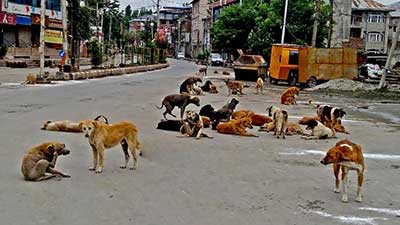Date: 21/04/2023
Relevance: GS-2: Government Policies and Interventions for Development in various sectors and Issues arising out of their Design and Implementation.
Key Phrases: Animal Birth Control Rules, Ministry of Animal Husbandry, Prevention of Cruelties to Animals Act, 1960, Prevention of Cruelties to Animals Act, 1960, animal-human conflicts, Local Animal Birth Control Monitoring Committee.
Why in News?
- In response to the growing number of stray dog attacks, the Ministry of Animal Husbandry has developed a new set of Animal Birth Control Rules.
- The Animal Birth Control Rules, 2023 have been formulated under the Prevention of Cruelty to Animal Act, 1960 superseding the Animal Birth Control (Dog) Rules, 2001.
- The Centre is calling on States, local self-governments (LSGs), and Resident Welfare Associations (RWAs) to enforce these rules to help control the population of stray dogs and address animal welfare issues.
Concerns over the increasing number of stray dog attacks
- The number of stray dog attacks in India has increased steadily over the years.
- In 2019, India had a population of nearly 1.5 crore stray dogs, making it the world’s dog-bite-and-rabies-capital.
- The problem has been acknowledged by States, the Centre, the judiciary, municipalities, and non-governmental organisations, but the problem persists.
Challenges Due to Stray Dog Problem:
- Public health concerns:
- Stray dogs can carry and spread diseases such as rabies, which can be fatal to humans.
- They can also transmit other diseases through bites, scratches, and faecal matter.
- This creates public health concerns and can lead to outbreaks of infectious diseases.
- Safety issues:
- Stray dogs can also pose a safety risk to the public, especially to children and the elderly.
- They may be aggressive towards humans and can attack, causing physical injuries.
- Nuisance:
- Stray dogs can create a nuisance by howling, barking, and digging.
- They can also damage public property by digging through garbage and littering.
- Animal welfare:
- Stray dogs are often mistreated and abused by humans, leading to poor quality of life.
- They may suffer from malnutrition, dehydration, and disease, and may also be subjected to cruelty and neglect.
Background and Need for the New Rules:
- The previous Rules from 2001 failed to adopt humane procedures for controlling the stray animal population.
- In response to complaints of cruelty to animals and other malpractices, the Ministry revised the rules in consultation with the Animal Welfare Board of India (AWBI) and notified them on March 10, 2023.
Animal Birth Control Programmes:
- Under the new Rules, LSGs are responsible for implementing Animal Birth Control (ABC) programmes for sterilising and immunising stray dogs.
- The Ministry is concerned about complaints of cruelty in carrying out ABC programmes, and the new rules aim to reduce the stray dog population while addressing animal welfare issues.
Responsibilities of Local Authorities and RWAs:
- The new rules put the onus of maintaining and controlling the population of stray dogs on LSGs and RWAs.
- The new set of rules elaborates on a set of actions to be followed by RWAs and LSGs in managing stray dogs.
- The RWAs are requested to designate feed spots for dogs, which should be far from children’s play areas, entry and exit points, and staircase or in an area which is likely to be least frequented by children and senior citizens.
- The local authorities are held responsible for any violation and animal-human conflicts.
- The nature of the dogs should be considered while dealing with complaints about man-animal conflict.
- The Rules also note that no court allows relocation of dogs, as they are territorial animals and cannot be kept in closed confinement. The Hon'ble Supreme Court has in various orders specifically mentioned that the relocation of dogs cannot be permitted.
Euthanasia:
- The Rules also suggest euthanasia for “incurably ill and mortally wounded dogs” as diagnosed by a team appointed by the Local Animal Birth Control Monitoring Committee.
- The Rules suggest that it should be done in a humane manner by intravenous administration of sodium pentobarbital or any other approved humane method, by a qualified veterinarian.
Animal Help Centre:
- The Rules suggest establishing an Animal Help Centre where complaints about dog or cat bites can be registered.
Conclusion:
- The new set of Animal Birth Control Rules is a much-needed step towards controlling the population of stray dogs and addressing animal welfare issues.
- By implementing these rules effectively, local bodies can help reduce stray dog populations while addressing animal welfare concerns.
- Cities such as Ooty, Chennai, parts of Uttarakhand, Goa, and Delhi can be showcased as better models for managing stray dogs.
Source: The Hindu
Mains Question:
Q. What are the Animal Birth Control Rules notified by the Ministry of Animal Husbandry? Discuss the role of local self-governments (LSGs) and Resident Welfare Associations (RWAs) in implementing these measures.






















